Commercial Real Estate
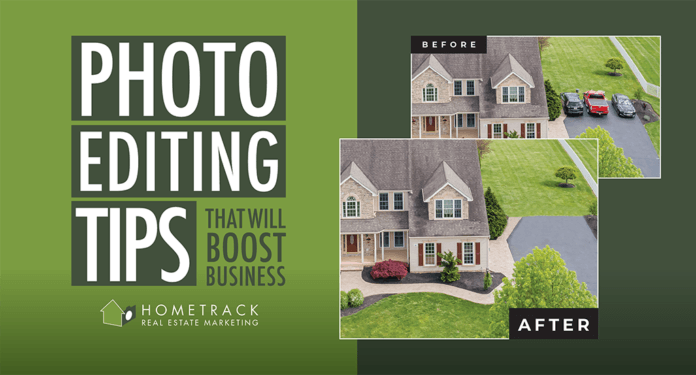
Photo editing is the post-production process of digitally altering or enhancing a picture using special software. Once a photo shoot has taken place, the work of editing begins in order to ensure that the images representing a home are of the highest quality. Any agent who wants their real estate business to stand out in a crowd knows that important details cannot be ignored. That is especially true when it comes to real estate photography . A picture is what first draws the attention of the more than ninety percent of people who begin their home searches online. And pictures are what keep their attention the longest. Those agents who pay attention to the details and provide their customers with premium pictures are able to set themselves apart as a premium business. And yet, not every photograph is a work of art. Ask any teenager who snaps dozens of selfies to find the perfect shot to post online. Truth is, even professional photographers take dozens or even hundreds of photographs during a photo shoot and cull the very best photos from the batch. But they do not stop there. Once the best photos have been selected, the hard work of editing serves to enhance those images. The color may need correction. The light may need to be balanced or the exposure adjusted. These and a host of other alterations are employed to help a home to look its best. (Read also about “ What Goes Into Video Editing ”) Beyond some of the more standard edits, a photographer or photo editor may also perform more advanced modifications, such as object removal to get rid of unwanted items in an image, or blue sky replacement to make up for a shoot that took place on a cloudy day. From simple resizing to full-blown virtual staging , a professional photography service can offer up the highest quality photographs for your customers’ listings. Of course, you may choose not to seek the services of a professional photographer. You may prefer to take pictures yourself. Either way, it is critical that the pictures you provide your customers be first rate. And that means not only taking great pictures – and plenty of them – but careful editing to boot. So, what editing tools and tricks should you use with your real estate photos ? Well, that all depends on what your photos need and what your clients request. Here are some of the more common photo editing elements along with a few advanced services you can employ. Cropping and Resizing. Photos that are taken at a distance often leave the subject looking small or insignificant in the background. Narrowing down the field of view can help to focus a viewer’s attention on what matters. Color Correction. Raw images taken of a room or a yard often appear dull or drab. Or the colors captured by the camera just don’t look quite right. Maybe the blues look too much like purple, or the whites came out a little too white. Color correction adjusts the color in a photo to make it look as accurate as possible. Light correction. White balance is the process of removing unrealistic colors cast on objects or walls to make sure that what appears white in real life renders as white in your photos. Other lighting corrections can change the contrast, deepen the shadows, add highlights, and more. Straighten Lines. When horizontal lines in a picture are not level with the horizon and the vertical ones are not straight up and down, the whole image seems distorted. Sloppy. Unprofessional. Fortunately, the lines in an image can be corrected to align with a grid so that the picture appears straight and true. Object Removal. Sometimes an object makes its way into a photo unintentionally. A lamp cord sticking out from under an end table. A cup left on the counter. Other times, personal information or images are captured in a picture, such as family portraits, framed diplomas, or computer screens. These unwanted items can be removed during the editing phase. Blue Sky Replacement. Photo shoots cannot always be scheduled for perfectly sunny days. Good news is, a grey sky can be replaced with a blue one by a photo editor. The background of exterior shots can have a blue sky added to them. So can the views through the windows from inside a home. A similar process can be used to make the lawn appear greener or improve the reflection in the water of the backyard pool. Twilight Conversion. There is something altogether captivating about an image of a home set against the eerie backdrop of a sky at dusk. It is a little dark, dramatic, and a bit extraordinary. Photographing a home during the “golden hour”, the period of time just before sunrise or just after dark, requires precise timing and near-perfect conditions. Virtual twilight conversion does not. An ordinary picture can be converted to have the same appeal. Virtual Staging. Staging is an effective way to showcase a home at its best. An empty home is often slow to sell; a disheveled one even moreso. But physical staging is time consuming and expensive. Virtual staging, on the other hand, can transform an empty (or nearly empty) home into a fully-furnished and professionally-staged model in nearly any decorating style – at a fraction of the cost. While this is not an exhaustive list of photo editing options, it does emphasize the range of opportunities (and responsibilities) to make your clients’ photographs the best they can be. And not just that; the better the quality of your photos, the better your brand identity . Your customers – and anyone else who views your listings or visits your website – will judge the quality of your business by the quality of the photos that represent your product. Those images reflect how hard you work to sell a home. Once upon a time, curb appeal was king. While that is still true to some extent, the way that people see a home from the curb is mainly through a photograph. Whether those pictures are uploaded to the listing, posted to social media , or featured in your postcards or brochures , your customers expect a professional product, regardless of who snaps the shutter. And while excellence begins behind the lens, it ends with professional photo editing.

Any agent can benefit from a partnership with a photo editing service for real estate photos . It really doesn’t matter if you tend to contract a photography service , or if you prefer to take pictures yourself. Handing off the job to a professional photo editing service, whether that is a simple touch-up on a batch of photos or a full-scale virtual staging , just makes sense. The truth is, you probably know that already. After all, there are certain responsibilities in the process of listing and selling a home that you would probably not consider to be yours. You might coordinate most of the items that need to get done, but you don’t process the mortgage, perform the title search, or facilitate the closing. You don’t dig up the septic tank or test for mold in the basement. Those responsibilities naturally fall at the feet of other professionals. And yet, when it comes to a task like photo editing, many agents feel like they simply cannot sublet the responsibility of photo editing to someone else. “I can’t afford it,” they say. “I don’t want to give up that much control.” Or, “What would people think?” What is included in a professional photo editing service? Most people understand that photo editing is a process of altering a digital image after it has already been taken, during the post production phase of photography. Really, almost anyone with a mobile phone is aware that photos can be edited after the fact using an on-board app. For serious editing, though, digital image files are uploaded into editing software, such as Adobe Photoshop or Lightroom, where they can be cropped, adjusted, and altered. But those editing features are merely the beginning of what is possible in post production. Lighting, color balance, and other image modifications are included, yes, but so are advanced services. Here are some examples of the types of edits that might be done to real estate photographs : Basic photo editing. This can include anything from adjusting contrast, exposure, lens correction, color adjustment, resizing and cropping, and more. Object removal. Any unwanted items that were missed when preparing for a photo shoot, like a wayward sock on the bedroom floor or a cat that took an untimely walk in the background, can be erased from a photo. Virtual staging. Vacant homes have a tendency to sit too long on the market. And yet, traditional staging is costly and not always feasible. A home can be virtually staged after it has been photographed using this editing service. Twilight conversion. There is something stunning about a home photographed at the “golden hour” just before sunrise or after sunset. But that “hour” is only about fifteen minutes long – not too convenient for every photo shoot. Twilight conversion can take a regular photograph and make it look like it was taken at dawn or dusk. Blue sky replacement. As with twilight conversion, this service makes up for less-than-ideal conditions when capturing images of a home or property. A dull and cloudy day can be turned into a bright and cheery one with blue sky replacement . Green Grass. If the sky can be turned blue, why not green up the grass at the same time? Some of these services come standard when you send you photos to be edited. Others are add-on products to help you showcase your properties. Photo-editing myths Clearly, there are many things that can be done to enhance the images for your listings. Still, many agents choose to go it alone when it comes to photo editing. Why? Probably because they believe things that are not true about the service. For instance, some people believe that it costs too much to send out pictures for editing. Nothing could be further from the truth. Think about it. Photography takes time. Time to declutter. Time to prepare the kitchen and other parts of the house to make them photo-ready. Time to take the pictures. But the most time-consuming part of the process is post production. Editing. After everything else is done, someone has to sit at a computer and make ready the pictures for publication. If you, the agent, are the one sitting for long hours at the computer, you are not doing the one thing that actually generates revenue for your business: selling homes . It is like a commercial fisherman who finds himself cleaning, processing, packing, and shipping his own fish. All of those chores done on the land take away from his time on the water where he actually catches fish. That is where his time is best spent – in the boat, not on dry ground. Is it not the same for an agent? Your time is best spent building and nurturing relationships with people, not with a software program. Another myth that agents fall to is that they will lose control of the process if they hand it over to someone else. But is it really true? In order to “be in control” of the editing process, you need to have a thorough understanding and knack with each of the editing tools and techniques available. That takes more time and more money. Handing off your photos to a professional editing service does not mean that you give up editorial say in the process, only that you do not need to be the expert of all things editing. Not to mention, the turnaround time for a professional editor is probably a lot faster than what you can do anyways. Leave the photo editing to the professionals. Finally, some agents want to project that they are in control of every operation, and so the idea of outsourcing is perhaps a bit unpalatable. What would your clients think if they knew you were sending their photographs out to an outside business? Actually, they would probably be comforted. As long as you frame the discussion the right way, your clients will appreciate that you are providing the best service possible for their home. Remember, a professional photographer or photo editor understands not only the technical process to achieve an adjustment to a photograph, but also possesses the artistic ability to make it look natural. Remarkable. Professional. Benefits of professional editing Besides the fact that you can trust your photos to a professional photographer or editor who knows his or her craft, there are other benefits to professional editing. Better your photos. Since photos are the number one draw for a property – that makes them pretty important – the higher their quality, the better your sales Build your brand. Your photographs will also be a hallmark of your business. Again, the better their quality, the better the perception people will have of your business brand. Increase your credibility. Many listing photos reveal that agents across the country do not place the importance on photography that they should. Poorly framed and lighted cell phone pics do not lend a sense of credibility to a business. Professionally edited photos do. Re-purpose and multi-purpose your photos. Today, your listing photos need to do more than accompany the listing. You should be able to include them in your social media posts, on your website, and in your postcards or brochures. A professional editing service can optimize your digital photos for each platform – and for viewing on mobile devices. With these benefits and more, it should be clear that, whether you take your own pictures or hire a pro, the job of editing those photos should be left to a professional editing service to save you time and money.
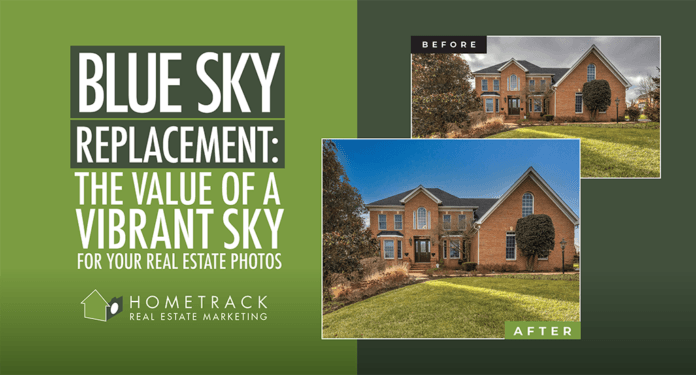
What is Blue Sky Replacement? Sky replacement is a photo editing process using digital tools to alter or replace the sky background in a picture during the post-production phase. It is often used to enhance real estate photographs that were shot in less-than-ideal conditions. Why replace the sky? The late Ella Fitzgerald sang, “Blue skies smiling at me. Nothing but blue skies do I see.” Those are fanciful words for sure, but they certainly do not ring true in the world of real estate photography , where a photo shoot often needs to be completed when the sun is in hiding and the skies are dull with clouds. And yet, image quality is one of the most important factors that leads to customer engagement with a property listing, social media post, or web page. In the highly competitive world of real estate, where nearly ninety percent of homebuyers who search online place photos at the top of the list of useful features on a listing website, it is essential to present not only the highest quality, but the most compelling images possible. After all, viewers spend only about twenty percent of their time reading your property descriptions – and about sixty percent of their time viewing your real estate photos . What’s more, studies show that seventy percent of agents believe high-quality photography helps them to win more listings and improve their business brand . Plus, those photos garner sixty-one percent more views online and help homes to sell faster. And yet, even the most competent photographer using the most sophisticated photography equipment cannot control every condition during a photo shoot. A perfect picture is not always possible. That is where photo editing comes into play. A Blue sky replacement service can enhance your photographs after the fact, when conditions were not ideal during a photo shoot. What is involved in blue sky replacement? As you probably know, post production and editing take place after a photo shoot has been completed. Digital files are uploaded into editing software where they can be cropped, adjusted, and altered. Like twilight conversion or virtual staging , a blue sky background is one of the services provided by professional real estate photographers and editors. Blue sky replacement can be done to both outdoor and indoor images where the sky can be seen through the windows. To perform the service, a photo editor will select the sky background section of a photo and swap it out for a vibrant and cheery blue alternative. But the editing does not end there. To make sure the altered photo looks natural, the rest of the image must be enhanced to blend with its new horizon. For instance, an editor must pay careful attention to highlights and shadows, or to the color effect that a brighter and bluer sky might have on objects in the photo. A background that is too bold or saturated, or one that includes colors that are inconsistent with the rest of the picture can look fake and unrefined. Likewise, if an editor fails to consider where the light falls on trees and buildings and other structures, a picture can appear unnatural. Photo editing is as much an art as it is a science – and that includes sky replacement. Blue sky replacement photographers and photo editors develop a keen eye, a sense for composition and color in a picture. An understanding of how light affects a subject. That holds true when framing an image through the camera lens and when enhancing that image on a computer screen. Why hire a professional for blue sky replacement? In today’s technological world, there are advances made almost every week. New cameras . New mobile devices . New software packages. Open houses are now online and real e state videos are taken from flying drones . Not only are the tools getting better and smarter, they are getting cheaper. If there is a downside to the advances in technology and the decreases in cost, it may well be that there are a good many people, agents included, who are attempting to perform “professional” services without professional skills – or results. Sure, some agents are skilled photographers and editors . But that is not the majority of agents. The evidence for that can clearly be seen in the plethora of poorly framed, lighted, executed, and edited pictures that accompany property listings on the MLS. Many agents would be better served if they considered professional photography for their customers. And while some agents undoubtedly possess the skills to take care of their own photography (some might also have a staff photographer in house), the sheer amount of time it takes to set up a photo shoot, assemble the tools, take the pictures, and do all of the editing (including sky replacement) can take a serious bite out of the time left for other responsibilities. Interestingly enough, most agents agree. According to one study, more than nine out of ten agents are passionate about the importance of using professional photography, and yet only half actually do so for all of their listings, and fifteen percent do not hire a professional photographer at all. And yet, those agents who rely solely on professional photography tend to earn higher commissions. And those who have the finest images available for their clients boost their brand identity to boot. A professional photographer will take hundreds of photographs, cull them down to a select series of shots, edit them according to your conditions, and make them available to you in short order – usually within 24 hours. Professional photographers and editors have a faster turnaround time for a finer product. Blue sky and all. So, handing off photography responsibilities to a professional service can not only free up time, but it can offer a good return on investment. Photography services are remarkably affordable, with packages starting below two hundred dollars. The main goal of blue sky replacement and other professional editing features is to attract buyers to your listings, your print ads (like postcards and brochures ), and your website. Unless your pictures pop with vibrant color and vivid detail, and yet with a natural look, they will not have the impact that you desire and your sellers deserve. So, maybe Ella had it right: “Blue days, all of them gone. Nothing but blue skies from now on…”
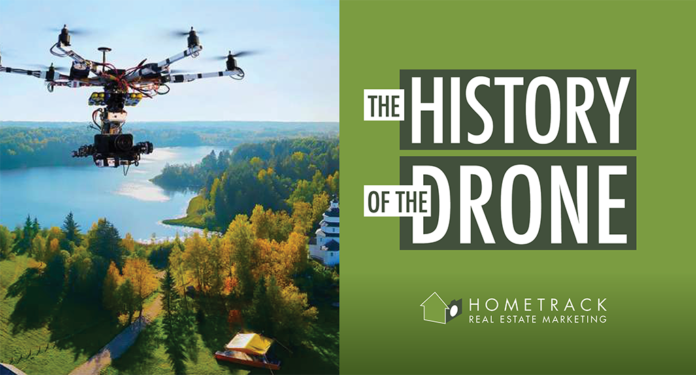
Drones, more formally known as unmanned aerial vehicles, or UAVs, are unpiloted aircraft that are guided by remote control or autonomously by onboard computers and GPS. Today, drones have dozens of different uses from recreation to retail. But their beginnings, and most of their history, has been for military purposes, including surveillance, reconnaissance, battle damage assessment, and, of course, weapon delivery. Here is a brief history of the drone, along with some of its non-military uses, including real estate marketing . Take a look at the nightly news and you will likely see a story about a recent drone attack on an oil tanker off the coast of Syria. Or you might get a glimpse of a Yemeni retaliation on a Saudi air base using drones. Not long ago, the Mexican Cartel was accused of using explosive drones to attack police. But the use of unpiloted aerial vehicles for warfare is nothing new. In fact, the practice can be traced back to the mid-1800s, when Austria attacked Venice by launching about two hundred unmanned balloons loaded with explosives. The early days of drones When you think of a drone, you probably do not have in mind a nineteenth-century attack balloon. Actually, the first unmanned aircraft was developed by the British in 1916, after the start of the first world war. Although the early technology showed some promise, the British military did not continue to pursue it. But the Germans did. Recognizing its significance, they made multiple attempts to assassinate the British engineer who developed the technology (and they later adapted it for their V1 rocket program in WWII). The US Army joined in soon after with the creation of the “Kettering Bug,” considered to be a forerunner of present-day cruise missiles. The Bug relied on gyroscopic controls to work as a sort of torpedo from the air. Once launched, each Bug would fly for a predetermined period of time before the engine was shut off and the wings were released so that the unit, along with its 180 pounds of explosives, would plummet to earth and detonate on impact. About fifty Bugs were built, but too late to actually see any combat in the war. After WW!, the US Navy began experimenting with radio-controlled aircraft. So did the British. In fact, their 1935 “Queen Bee” is believed to have led to the use of the term “ drone ” for radio-controlled unmanned aircraft. A remote-controlled model airplane, also developed in the 1930s and called the “Radioplane”, became the first mass-produced UAV product in the US; nearly 15,000 units were made for the military during WWII. Actually, a number of developments occurred during the period following WWI, including the first UAV that could fly out of sight of its user, and, most notably, the emergence of the German V-1 Doodlebug, effectively the world’s first cruise missile, used for terror bombing of British cities in WWII. Later, during the Vietnam war, UAVs were developed for use as reconnaissance tools to gather information in combat areas. They were also used as decoys that could launch missiles against fixed targets or drop leaflets for psychological operations. The 1960s also saw the beginnings of remote controlled planes for recreational use, thanks to breakthroughs in transistor technology. Of course, the US military continued working on drones, and by the 1980s began to see success in the development of more reliable and less expensive models. Modern uses for drones Through the nineties and to the present, drones have gotten smaller, more powerful, more intelligent, and less expensive. And they have found an increasing number of uses outside of the military. Today, they find dozens of different uses, from defense to humanitarian aid and disaster relief. Consider just a few of the current non-military uses for drones: Real estate photography Real estate marketing Construction planning and infrastructure development Conservation Healthcare Weather forecasting Insurance Tourism and hospitality Sports and entertainment Retail deliveries And the list goes on. Many applications, not only for the military, but for business and pleasure as well. Drones for real estate There are many applications and benefits for drones in real estate marketing too. Drones can obviously capture images that standard land-based photography cannot. For instance, a drone provides a birds-eye-view of the front elevation of a lake home from the middle of the lake. Or even a look at the lake itself. Trying to capture the essence of a large home or estate? Drone photography allows for better views of bigger homes and their properties. Viewers can take in sweeping panoramas of the tennis court, the pool, and the guest house. Or the patio, the porch, the pillars. They can get a glimpse of the golf course next door. They can see the entire home and landscape and all its attributes. A drone is also able to offer an overview of a large swath of land that cannot be seen from the ground. This is especially helpful if the property is wooded and cannot be seen in its entirety unless viewed from the sky. Another use for a drone might be to take viewers on a tour of the town . Buyers want to know what the surrounding community is like before they decide to buy a property. An agent can accomplish this by creating virtual t our s or v ideos of local attractions and by creating a drone video that connects them with the town. Drone photography does a couple other things for a listing. For one, drones create a buzz . And not just with their propellers. They cause a stir across listing sites and social media platforms. The technology, regardless of their long history, are still considered new and novel. They are trendy. They have appeal. What’s more, drone video images bring photography to life. They make a space feel more personal by lending a sense, not only of what a property looks like, but what it feels like as viewers are flown up the driveway, across the lawn, down the street, or through a hedge row. And all of these benefits come without a huge hit to a marketing budget. Drones offer aerial photography that is easy on the expense sheet, usually far less expensive (and far more flexible) than other forms of aerial photography. Drones have quite a long and varied past. They are becoming ubiquitous in the present and are changing aerial photography in real estate . It will be interesting to see what is held in the future of drone photography services .
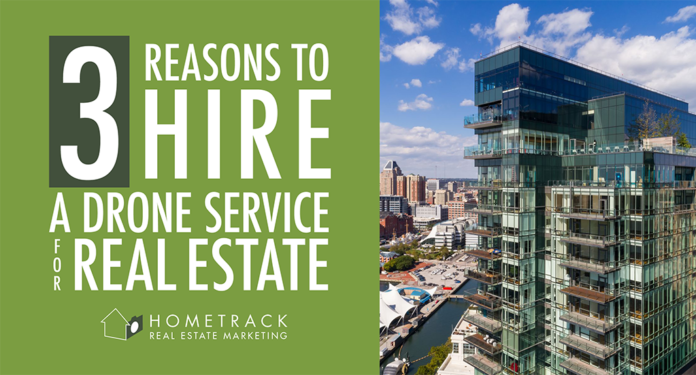
Before you add a drone photography to your real estate marketing mix, it is important to consider how you might go about capturing those aerial images for your customers. Do you simply buy a drone and shoot them yourself? Or do you look to a drone photography service to get the job done? Perhaps your best bet is to hire a professional real estate photographer who offers drone services. Read on for three reasons why. The not-so-professional approach Surely you have seen them: poorly framed pictures and ammeteur shaky-cam video clips. From family photos to vlog videos and anything in between, a camera in untrained hands will usually yield less-than-desired results. That may be okay for a family photo album or a vlogger’s fifteen followers. Not a great idea when it comes to assembling an assortment of real estate strategies to market a property. (Learn about the Real Estate Photographs You Need to Get Right ) Oh sure, advances in technology have made it easier to get quality images from a digital camera or even a mobile phone. The new iPhone 12 Pro Max, for example, boasts a 2.5x zoom lens, 12 megapixel resolution, 4K video quality, and LiDAR scanner. Many smartphones today, including the iPhone, also include image stabilization to aid with steadier image capture. And yet, there are plenty of property listings filled with pictures that look like they have been taken by a child who did not bother to clean up his room, let alone figure out how to properly light and frame a photo. Having capable camera equipment is only one piece of the photographic pie. Other slices include the time it takes to learn the craft and work each photo shoot (not to mention editing the videos and pictures after the fact), along with the talent needed to produce top-notch results. So, real estate agents have two general options for photography. Those who have the time and talent to achieve professional results – and who have a desire to provide their own photography services – can go th e do-it-yourself route. Others will opt to contract with a professional real estate photography service. What about drones? When it comes to drone photography, agents face a similar choice. Offering drone photos and videos to your customers does a few things. First of all, bird’s-eye views of a property add a unique perspective to a listing. They give prospective buyers a look at features that cannot be viewed from the ground, such as the roof or the chimney. Large properties or wooded lots often cannot be seen in their entirety without aerial images. Drones can solve that problem. (See how Drone Photography Can Help You Sell More Listings ) Next, drones allow you to add other unique elements to a listing. You can take your buyers on an aerial tour of local hotspots or area attractions. You can fly them over their child’s path to the neighborhood school or park. You can show them comparable listings or properties that have recently been sold. Finally, drone photography becomes for you a powerful marketing tool to help your business stand out. Along with other strategies you might offer – an exceptional print advertising campaign, 3D virtual tours , and walkthrough video services, for example – drone photography helps you to build and improve your brand identity . But the question remains: who performs your drone photography? The case for contracting a professional real estate photographer Two things are true: drone technology is improving, and drone prices have been falling. Those two truths can make it awfully appealing to invest in drones for your real estate business. But is that the best choice for your business? Maybe the answer is yes. But if you are unsure whether you should go it alone or hire a professional, consider the benefits of a professional real estate photographer who offers drone s ervices . Any professional drone photographer for real estate should… …be licensed and insured. While use of a drone does not require a commercial pilot’s license, in order to pilot a drone for commercial purposes, the Federal Aviation Administration (FAA) requires that drone operators be certified under FAA Part 107. It is also important that a drone operator be insured. Drones can crash and cause damage or injury. A drone pilot should be insured and be able to show proof of insurance. …have an eye for real estate photography. There are a lot of drone operators these days, both professionals and hobbyists. Many are quite skilled. But having the skill to operate a drone does not immediately equate to having the ability to take quality pictures and videos from that drone, let alone having a keen eye for the unique needs of real estate photography. Make sure that any drone service you consider is able to provide a portfolio of real estate photographs for you to evaluate. …offer additional services. A real estate photographer who offers drone services (as opposed to a drone operator who takes pictures) can often provide an array of related services, such as digital editing and twilight photograph y . To maximize the benefits of a partnership with a real estate photographer, look for a business that can also help you with 3D home tours, HDR listing photography, virtual staging , print and design services, and more. If you are going to add drone photography services to the list of real e state marketing strategies you offer your clients, you have a choice to make. Either you purchase a drone and learn how to fly it, get licensed and insured, practice shooting pictures and video, and become proficient with digital editing tools yourself, or you hire someone else to do it for you. For most agents, a relationship with a professional real estate photographer is the answer.
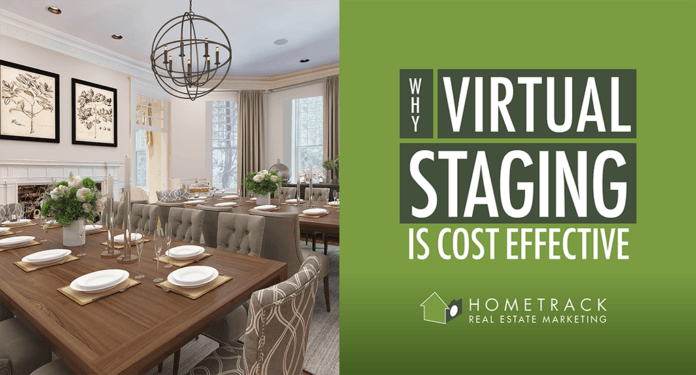
Virtual staging is a process that allows you to digitally decorate and furnish a home without the time and expense associated with traditional staging methods. When performed by a qualified professional, virtual staging can transform a vacant room into a realistic and artful space. Or it can empty out a fully-furnished home while the homeowner is still in residence. Virtual staging is cost-effective and works. That is the opinion of the majority of real estate agents. But is it worth the cost? Well, according to the NAR, for every one hundred dollars spent on staging, the potential return on investment is four hundred dollars. That is not insignificant. But traditional staging for a home can run into the thousands of dollars, and many real estate marketing agency budgets simply do not allow for that big an expense. The cost of virtual staging is a fraction of what it costs for traditional staging, and it takes less time than trying to stage a home yourself . Save money, save time, and close deals faster with Virtual Staging… Virtual staging, sometimes known as “virtual styling”, costs less than traditional methods, to be sure, but that is not the only reason that the service has been growing in popularity with home sellers and their agents. Consider these 5 cost and time saving advantages virtual staging can add to your next listing: Virtual staging allows you to optimize for the internet. Most buyers in today’s home market, certainly those younger buyers who make up its majority, begin their home search online. That fact makes it really important to get your real estate photographs right. What’s more, since the outset of the COVID-19 pandemic, more and more buyers are making their home visits virtually. Many are even purchasing properties sight-unseen without physically stepping foot inside a home until the walk-through – or after the closing once they have the keys in their hands . In order to capture and hold the attention of prospective buyers, your real estate photos need to portray a property at its best. That is especially true in the digital realm where viewers can zoom in to see every detail. Virtual staging helps you to do just that. Virtual staging helps when the seller is still in the home One of the first recommendations an agent makes to a seller at the beginning of the selling process is to clean up and clear out. To declutter the space. Buyers want to envision themselves living in a house. They do not want to see someone else’s personal effects everywhere. Besides, a clutter-free environment makes the entryway more inviting, makes the living room (and every other room for that matter) appear larger, and makes the closets look like they can hold more stuff.Of course, minimizing the amount of stuff already in the rooms and closets when the seller is still living in the home is not always an easy assignment. Virtual staging can help with that. While it does nothing to prepare for, say, an in-person open house , it can go a long way toward cleaning up the pictures you print and post. With virtual staging, you can clear out the clutter, rearrange the furniture, clean a mark off the wall, or pick up a stray sock that made its way into the photo shoot – all after the shoot has been completed. Virtual staging lets you target the appearance of a home to your audience With virtual staging, designers have a huge array of design elements that can be digitally added to a home. They can help you to craft the decor to reflect different decorating styles or color schemes. Depending on the customers you are targeting, you can switch from traditional to modern to mediterranean. Or you can empty out the home completely.You can do the same with the exterior of a home. Tailor the look of the yard to your audience: patio furniture, playset, or nothing at all. To enhance the effect, you can add other editing services to create a blue sky when the photo shoot took place on a cloudy day, or to green up the grass when it hasn’t rained in a few weeks. Virtual staging makes it easier for your buyers to imagine One of the most popular aspects of home improvement shows on television is the reveal. Viewers anxiously await the unveiling of the newly renovated space, clean and clutter free and professionally staged. Notice, the producers do not leave the rooms empty, nor do they just drag all of the homeowner’s old belongings back in. They make the house look as inviting as possible to draw viewers in.Staging has long been used as a tool to help people envision what a home could look like if they were living there. How might the living room be arranged? Or the kitchen ? In fact, more than eighty percent of buyers’ agents responding to a NAR survey said that staging a home made it easier for a buyer to visualize the property as a future home. An empty house might be great when it comes time for an inspection or walk-through, but it does not always lend well to sparking the imagination. And having someone else’s belongings all over the place makes it hard for a buyer to imagine having their own items arranged in the space. To help buyers imagine themselves living in a home, your best bet is to help them to visualize what it might look like if they did. You can do that with virtual staging. Virtual staging can help a house sell faster According to the NAR, nearly two-thirds of sellers’ agents report that staged homes spend less time on the market than non-staged homes. Ultimately, that is the goal, right? Well, along with selling for more money. Fortunately, staged homes also sell at higher prices on average, at least according to more than half of the agents responding in the NAR study. In today’s virtual world, where COVID-19 has reshaped the real estate market, maybe for good, it makes sense to transition toward the use of digital strategies like virtual staging. Among buyers’ agents, having photos, videos , and virtual tours available for their listings has become increasingly important since the start of the pandemic. The truth is, the trend toward virtual engagement was already underway before shutdowns and social distancing were household terms. The coronavirus added momentum. That is not to say that tried-and-true real estate marketing strategies, like postcards and brochures are no longer necessary. They are. Virtual staging impacts not only the photos that appear in online ads and social media posts, but your pictures in print as well. Some agents stage every home they list for sale. Others only stage homes that are difficult to sell. Most agents, whether they stage or not, suggest decluttering or some sort of sprucing up. All agents should understand that the photographs they produce are their most powerful tool to attract buyers – the tool that grabs and holds their attention the longest, and has the greatest impact on their imaginations. Virtual staging amplifies that impact.
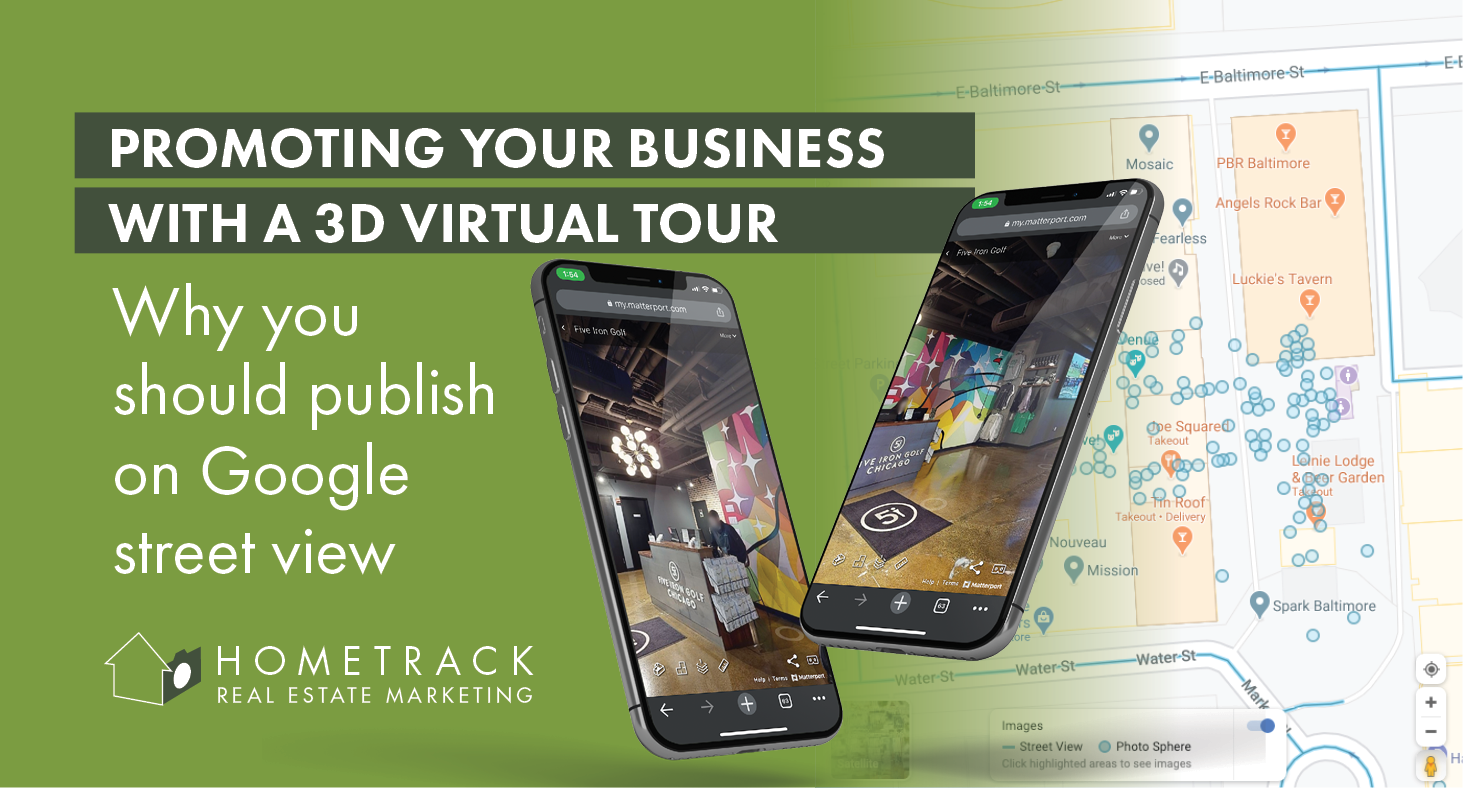
These have certainly been trying times the likes of which many in the world have never experienced. Through months of economic shutdown due to COVID-19, real estate offices across much of the country have remained open on the list of essential services to the public. But staying open has not been without its challenges. To […]
The post Publish a 3D Virtual Tour of Your Business on Google Street View appeared first on Hometrack Real Estate Marketing.
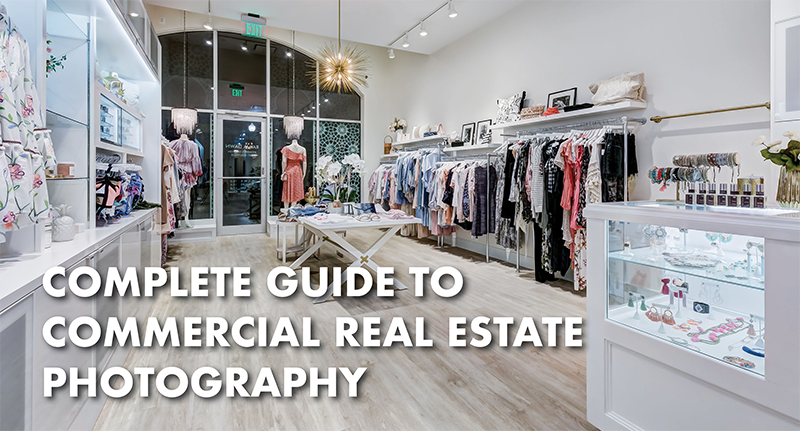
Location effects commercial real estate marketing, as does the quality of the photography. Whether the photos are taken on the ground or in the air, the latest digital techniques make a store, restaurant, or other venue feel real and ease the sale process. The best commercial real estate photography methods and technologies can give your […]
The post Complete Guide to Commercial Real Estate Photography appeared first on Hometrack Real Estate Marketing.

